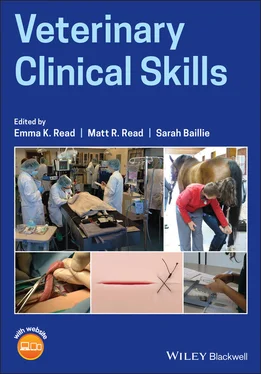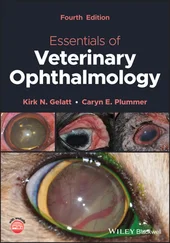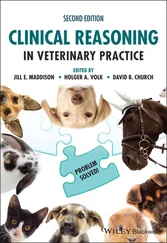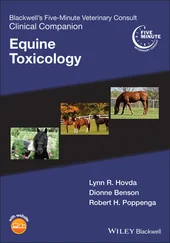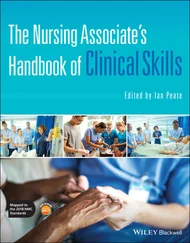Veterinary Clinical Skills
Здесь есть возможность читать онлайн «Veterinary Clinical Skills» — ознакомительный отрывок электронной книги совершенно бесплатно, а после прочтения отрывка купить полную версию. В некоторых случаях можно слушать аудио, скачать через торрент в формате fb2 и присутствует краткое содержание. Жанр: unrecognised, на английском языке. Описание произведения, (предисловие) а так же отзывы посетителей доступны на портале библиотеки ЛибКат.
- Название:Veterinary Clinical Skills
- Автор:
- Жанр:
- Год:неизвестен
- ISBN:нет данных
- Рейтинг книги:5 / 5. Голосов: 1
-
Избранное:Добавить в избранное
- Отзывы:
-
Ваша оценка:
- 100
- 1
- 2
- 3
- 4
- 5
Veterinary Clinical Skills: краткое содержание, описание и аннотация
Предлагаем к чтению аннотацию, описание, краткое содержание или предисловие (зависит от того, что написал сам автор книги «Veterinary Clinical Skills»). Если вы не нашли необходимую информацию о книге — напишите в комментариях, мы постараемся отыскать её.
Provides instructors and students with clear guidance on best practices for clinical skills education Veterinary Clinical Skills
Veterinary Clinical Skills
Veterinary Clinical Skills — читать онлайн ознакомительный отрывок
Ниже представлен текст книги, разбитый по страницам. Система сохранения места последней прочитанной страницы, позволяет с удобством читать онлайн бесплатно книгу «Veterinary Clinical Skills», без необходимости каждый раз заново искать на чём Вы остановились. Поставьте закладку, и сможете в любой момент перейти на страницу, на которой закончили чтение.
Интервал:
Закладка:
The veterinary degree, perhaps more than any of the other health science degrees, poses a challenge to curricular design due to the breadth of material that must be covered, expectations of the level of competence at graduation, and the variety of career options available to veterinarians. By recognizing the close correlation between the veterinary knowledge and clinical skills also expected of newly qualified veterinary nursing professionals, it follows that near‐similar challenges are posed to the design of curricula for veterinary nurses.
Despite its importance, it is easy to slip into a pattern of ad hoc curricular development with little attention to desired outcomes (Schneiderhan et al., 2018). Therefore, contemporary veterinary curricula must refocus on the fundamental knowledge, skills and behaviors required of graduates and utilize modern methods grounded in educational theory to best achieve these (Hodgson and Ilkiw, 2017).
In the broadest sense, a curriculum is defined as the totality of student experiences that occur in the educational process (Wiles, 2009), but any planned educational experience is also considered to be an example of a curriculum (Kern et al., 2016) with this latter definition being applicable for a section of a veterinary curriculum focused on clinical skills development. Although a clinical skills curriculum would not be the totality of veterinary training, the same principles of curricular design should be adhered to when developing, or evaluating, a clinical skills curriculum for veterinarians and veterinary nurses.
There are several fundamental tenets when approaching curricular design that have been well articulated by Kern (2016): “First, educational programs have aims or goals, whether or not they are clearly articulated. Second, medical educators have a professional and ethical obligation to meet the needs of their learners, patients and society. Third, medical educators should be held accountable for the outcomes of their interventions. And fourth, a logical, systematic approach to curricular development will help achieve these ends.”
To help achieve the last of these principles, Kern developed a six‐step model for curricular development in medical education (Kern et al., 2016) (see Figure 2.1). This model will be used as a framework for this chapter as all the steps are equally relevant to a veterinary clinical skills curriculum, for both veterinary and veterinary nursing students, with some modifications for the different educational contexts. Further, these principles of curricular design are fundamental, yet flexible enough to yield different types of curricula in different hands, depending on the local environment and the available resources in which the clinical skills curriculum is developed.
Steps in Clinical Skills Curricular Design
Step 1: Needs Assessment and Statement
The prompts for the development or review of a clinical skills curriculum can be multifactorial including both extrinsic (e.g. accreditation) and intrinsic (e.g. student performance evaluations) factors. A needs assessment will help answer “What are you trying to achieve, why is it important, and who will benefit?” The answers to these questions should point to the distinction between the current teaching content and strategies surrounding a learning need, and what should change about it (Kern et al., 2016).

Figure 2.1 Kern's six step model for curricular design.
Source : Based on Kern et al., 2016.
At the start, it is wise to consider whose needs are the priority. This may start with learners' needs (either skills or knowledge‐based needs, readiness to learn, or time available for learning) but likely extends to the patients and communities whom the learner will be serving (Kern et al., 2016). Furthermore, when justifying changes to time or funding, an articulation of how this curriculum, or curricular change, might meet regulatory or board requirements may be useful (Schneiderhan et al., 2018). To help with this step, it may also be helpful to develop a Clinical Skills Development or Review committee, as this has been a successful strategy used by some veterinary colleges (Read and Hecker, 2013; Morin et al., 2020).
The mechanics of a needs assessment includes utilizing readily available information, as well as the collection of new information (Kern et al., 2016). The acquisition of this information can be structured (e.g. surveys), semi‐structured (e.g. series of discussions with stakeholders), research/data‐driven (data on learner's performance or clinical quality data) or based on regulatory requirements (Schneiderhan et al., 2018). While a needs assessment will differ between institutions, there is some information available for veterinary clinical skills that may help inform this process.
Student Needs
Feedback from faculty, staff, and veterinary and veterinary nursing students may help indicate the students' needs for clinical skills review and revision. In a recent review by Malone (2019), it was noted that while graduating students do show improvement in confidence and competence from the start of the clinical year, they remain less than confident in many technical skills and abilities at graduation, which is echoed in other studies (Lofstedt, 2003). Similarly, only 69% of 2008 University of Queensland veterinary graduates felt satisfied with their overall skills, and only 70% felt prepared to enter practice (Schull et al., 2011). Feedback from faculty and staff may also be helpful to identify specific skills that require attention. For example, a University of Minnesota in‐house survey of technicians, interns, and residents identified student challenges with animal restraint and venipuncture (Malone, 2019).
Societal and Professional Needs
The needs of clients, as well as employers, should be considered when designing a clinical skills curriculum. For example, it was shown that the majority of veterinary clients viewed technical skills (such as prioritizing patients according to illness or injury, collecting blood samples, performing a preliminary examination of an animal on admission, assisting with physical therapy techniques and making radiographs) together with emotional intelligence and professional attributes, important in the clinical practice of veterinary technology graduates with whom they interacted in the veterinary practice setting (Clarke et al., 2015). Client interviews showed that clients attached importance to graduates demonstrating professional competence, and it was therefore concluded that data such as this is useful in the design of a professional and market‐driven veterinary technology curriculum (Clarke et al., 2015).
Veterinary students are licensed to practice unsupervised directly after graduation and therefore should be graduating with the knowledge and skills required to meet professional and societal demands (Greenfield et al., 2004). However, as described under student needs, many graduates do not have confidence in their own skills and abilities, which is also recognized by employers (Greenfield et al., 1997; Prescott et al., 2002; Lavictoire, 2003). In the review by Malone (2019), she described a collaboration between Banfield ®Pet Hospitals and the University of Minnesota to identify challenges that were encountered among the 800 new small animal graduates hired each year. The survey identified surgery, dental skills, catheter placement, and venipuncture as being “critical barriers” to the success of the new graduates, leading to decreased confidence and productivity along with medical errors and increased stress to the entire team.
Читать дальшеИнтервал:
Закладка:
Похожие книги на «Veterinary Clinical Skills»
Представляем Вашему вниманию похожие книги на «Veterinary Clinical Skills» списком для выбора. Мы отобрали схожую по названию и смыслу литературу в надежде предоставить читателям больше вариантов отыскать новые, интересные, ещё непрочитанные произведения.
Обсуждение, отзывы о книге «Veterinary Clinical Skills» и просто собственные мнения читателей. Оставьте ваши комментарии, напишите, что Вы думаете о произведении, его смысле или главных героях. Укажите что конкретно понравилось, а что нет, и почему Вы так считаете.
